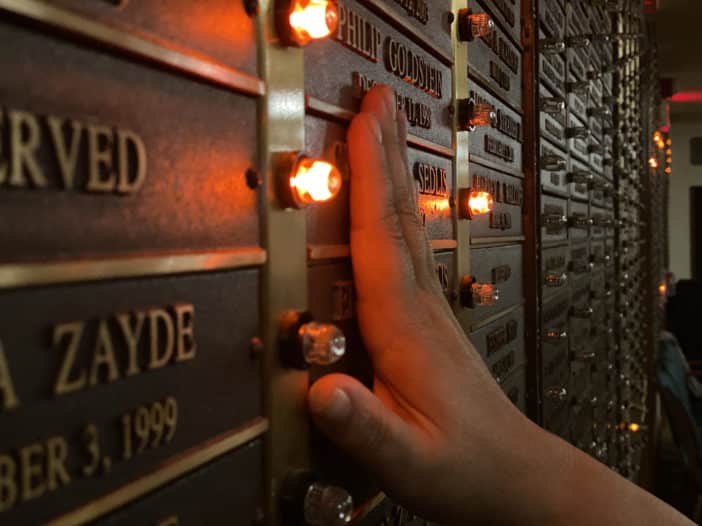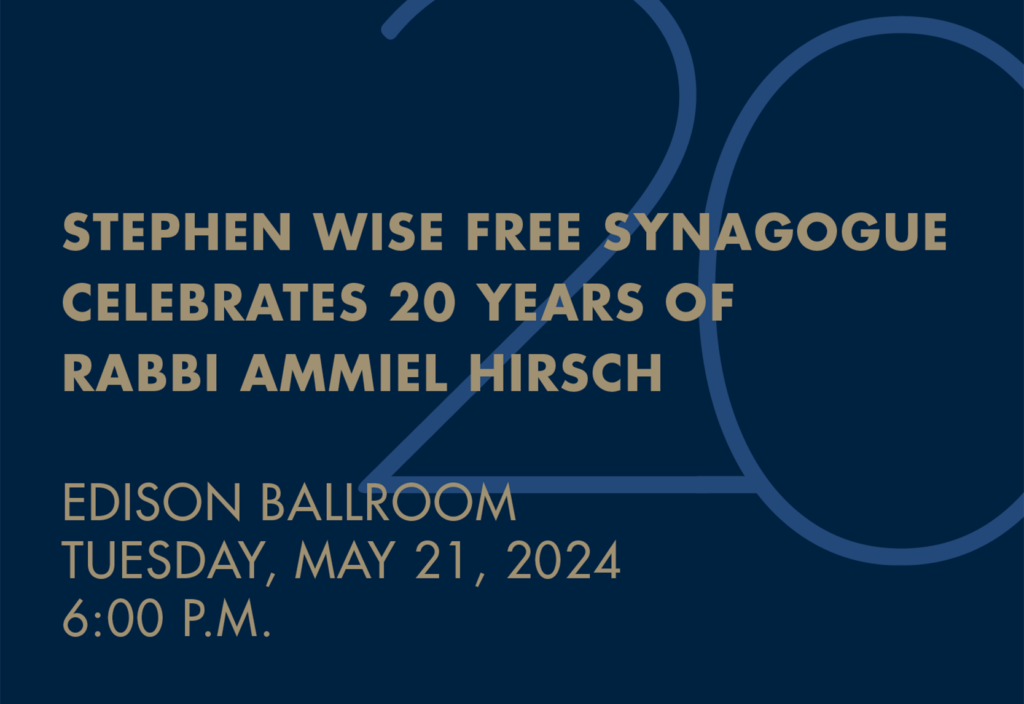
This has been a difficult year, full of immeasurable loss and so much sadness. “The hardest part of this pandemic for us, as clergy, has been to witness the enormous pain and suffering of so many of our congregants,” says Rabbi Ammiel Hirsch. “We felt the fear, anxiety and grief even more because we were thinking of all the people in our community who were suffering,” Rabbi Shira Gluck echoes. And with the isolation of social distancing, “we lost the physicality of mourning and the comfort that comes with it,” Rabbi Samantha Natov says.
During our morning Shacharit service, we say, “Eilu d’varim she-ein lahem shiur…” — “These are the things that are without measure…” Among those things: honoring thy mother and father, acts of lovingkindness, visiting the sick, celebrating the bride and groom, and accompanying the dead for burial. Jewish tradition views all of these mitzvot as equally important, “and they’re all communal,” says Rabbi Natov. “Judaism just wasn’t meant to be practiced alone.”
After a loved one passes away, the mourner’s Kaddish requires a minyan, a group of 10 adults representing the community of Israel. And during shiva, the intense seven-day period of mourning, the community comes together to meet all of the mourner’s needs, physically and spiritually, with food and comfort. “In some ways, we join our loved one in death — that’s what shiva represents,” says Rabbi Gluck. “When people who are untouched by death accompany us, they keep us connected to the world of the living.”
Judaism prescribes 30 days, or sheloshim, for the transition from being enveloped in total sadness to emerging again. But if the deceased is a parent, we continue to mourn for another 11 months. For our executive director, Sandy Divack Moss, after her father died, attending a daily minyan gave her “a way to compartmentalize and start each day with a moment of reflection. It let me be comforted by the community and to comfort them in return.”
“Remembering in Judaism is active: we intentionally bind up the memory of our loved ones who have died with the bonds of life when we remember them to each other, recalling what they would have said or sharing a memory about them with the next generation,” says Rabbi Natov, “and time is sacred.” We carve out special moments to honor those we’ve lost with Yizkor, the memorial service we recite on Yom Kippur, Shemini Atzeret, Pesach and Shavuot. At Stephen Wise, each year ahead of the Yom Kippur Yizkor service, we fill our Memorial Book with the names of those who have departed their bodies, but whose souls remain and place it in our ark, where it remains until the next year. And on our loved ones’ yahrzeits and every Yizkor, we illuminate their memorial plaques adorning our sanctuary.
But ritual isn’t enough to do justice to memory, says Rabbi Natov: “If we don’t share our memories of them, they end with us.” Our communications director, Ryan Greiss, who is an Israel Defense Forces veteran, lost 13 friends in combat during Israel’s Operation Protective Edge in 2014. “The first time we visited their graves at Mount Herzl, we brought beach chairs and sat around telling stories about them. It started sad, but eventually all of us were laughing,” he says. “Before we left, a Birthright group came through. We all said Kaddish and then I told them a little bit about our friends. Now it’s become a tradition — and my honor — to speak about them every year on Yom HaZikaron,” Israel’s Memorial Day. And through acts of tzedakah, we can endow our loved ones with immortality, says Sandy: “Whenever you say their name or support something they cared about, you’re keeping their spirit alive.”
Ultimately, the greatest way to honor those who came before us is through celebrating life. “Life and death exist side by side,” says Rabbi Gluck, “and joy lives alongside grief. The Talmud tells us that should a funeral procession and a wedding meet at a crossroads, the wedding party goes first. The day my grandmother died was also the day my best friend gave birth to her daughter. I went to the hospital and felt complete joy at meeting a new life.”
“The Mourner’s Kaddish doesn’t actually speak about death at all. It’s really an expression of gratitude that we had that person in our lives,” Rabbi Natov explains. “Every second is a gift, so we say thank you by praising God.”
Photo by Ryan Greiss.


